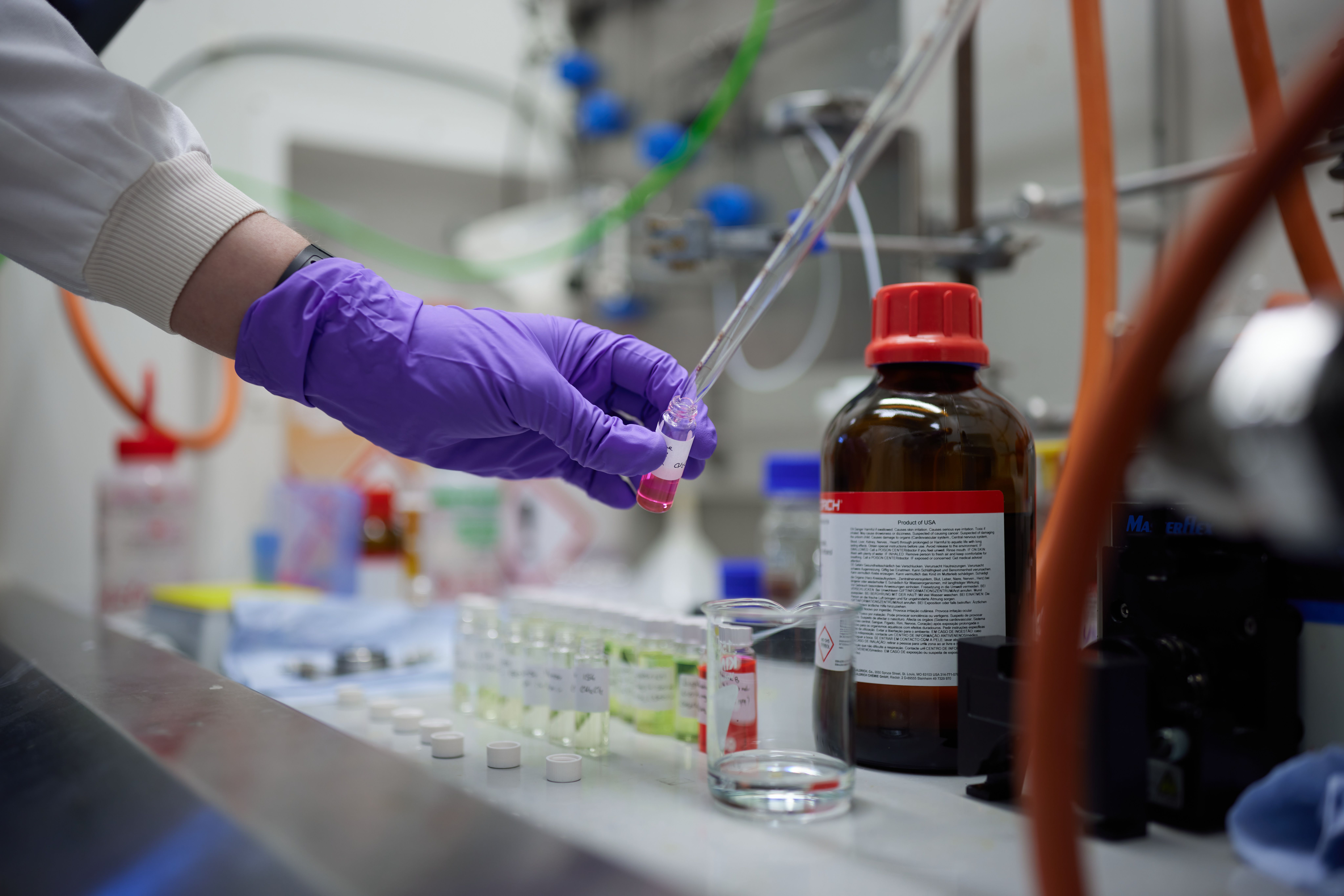
LightOx Ltd. are a company based in the Northeast of England that has a research-tools business selling reagents, including imaging agents, to their customers. LightOx develop light-activated products that researchers and industry R&D use to understand the biological processes that occur in a cell. These agents show the importance of specific cell functions and the mechanisms that cells use to survive and grow.
In-house, LightOx has shown that their imaging agents are capable of emitting fluorescence when they are activated by short wavelengths of light (violet or blue), allowing researchers to see where the agent is situated inside a cell. However, this light only penetrates short distances and can be damaging to cells.
One of LightOx's customers showed that a few of their agents can be activated by longer wavelengths of light (red) by what is known as two-photon absorption. This approach has major advantages, because longer wavelengths of light penetrate materials better and are non-toxic to cells. Using this technique would allow researchers to use LightOx agents to look deeper into challenging biological samples, like cancerous tumours.
LightOx however, don't have the in-house capabilities to perform these two-photon studies on their agents and sought the A4I scheme to find the support of large-scale facilities.
“The scientists at the CLF wanted to solve our problem and they showed us how they could do that. But also, they were really excited by the problem. They were showing us ways that they could add further value to this problem in ways that we didn't really imagine. They could do all this other stuff that we hadn't really anticipated. So, that was fantastic." Said Dr David Chishold, the Chemistry Team Leader at LightOx.
Through the A4I scheme, LightOx were able to partner with the CLF to further understand the two-photon absorption properties of the LightOx agents. LightOx and CLF scientists worked together to analyse the two-photon absorption properties of the molecules using the CLF's state-of-the-art laser imaging.
“Part of the solution is that our scientists could actually go to the CLF and take part in the project themselves. So actually, we employ a team of really young promising scientists, so for them to be able to go to this world leading facility and learn about the science they do, that was really beneficial for them and they really benefited from their development by going there." Said Dr Chishold.
They took precise measurements of the agents to build a picture of the ideal molecule that would provide the best two-photon absorption. By using the CLF's facilities and collaborating with staff, LightOx have gathered data about their current agents that are capable of non-toxic, deeper analysis of tissues and cells, and know how they can develop more agents to fulfil this research tool need.
“The relationship we had with the team we were assigned at the CLF was really really good, and hopefully we'll actually continue to have more projects in the future." Said Josh Hughes, a Research Scientist at LightOx.
Using the results from their time at the CLF, LightOx hope to enable researchers across the world to make new discoveries in fields such as cancer, cell biology, and therapeutics.
.jpg)
